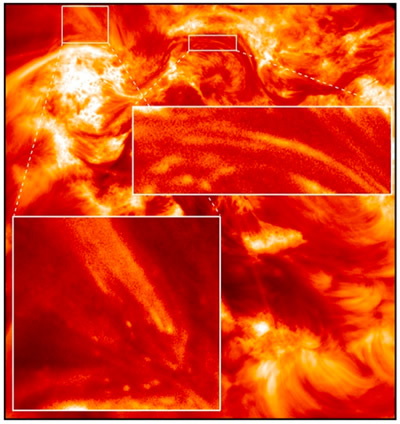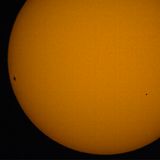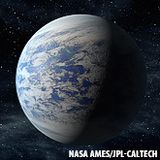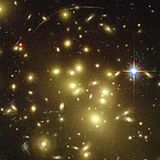
In results presented to the RAS National Astronomy Meeting on July 1, Professor Robert Walsh of the University of Central Lancashire revealed the latest findings on the solar scene.
Through the lens of a remarkable new camera located onboard a sounding rocket, an international group of scientists, including partners in the United States and Russia, have observed the Sun's outer atmosphere with amazing clarity. What they discovered was a network of "highways" and elusive sparkles which may help to answer some outstanding solar riddles.
Launched at the White Sands Missile Range in New Mexico, the NASA High Resolution Coronal Imager (Hi-C) managed to capture images of the solar corona five times sharper than any previous image. Not only did this set a new record, but they were also able to pick up new images at a rate of about one per every five seconds.
Aimed specifically at a large, magnetically active sunspot region, the Hi-C camera observed the activity in the extreme ultraviolet end of the magnetic spectrum. What it captured was several new features - including "blobs" of gas traveling along "highways" and electrifying "sparkles" which appear and disappear rapidly.
Just what causes this phenomenon? Small pockets of superheated plasma shoot along these coronal highways which are governed by the Sun's magnetic field. At about one million degree Celsius, these blobs are not only hot, but they're fast, too. They speed along at rates of about 80 km per second — or roughly 235 times the speed of sound on Earth. Their track isn't small, either. The average coronal "highway" is about 450 km across, or roughly the length of Ireland from north to south. They are traveling along what is known as a solar filament, a ribbon on dense plasma which can violently unleash its power in an event known as a coronal mass ejection (CME).
Like cracking a whip, a CME can fling billions of tons of plasma into space. If directed towards Earth, these events can disrupt everything from our terrestrial magnetic fields to power grids. It's a space weather event... and it could be as beautiful as causing aurora to as nasty as damaging satellite electronics.
Now, through the Hi-C expanded research, solar scientists can take a closer look at these solar "highways" and perhaps better predict when a CME could happen. By studying a magnetically complicated region, they were able to pinpoint areas of 1-2 million degrees Celsius plasma located in the outer solar atmosphere. Even more data will help further their understanding of why the solar corona is some 400 times hotter than the solar surface.
Perhaps the answer might be another new feature Hi-C has discovered - the sparkles. Lasting about 25 seconds, these bright anomalies are roughly the size of the UK and release about 10^24 Joules of energy each time they appear. To get a grip on that number, that's about one million million million million Joules... or about 10,000 times the annual energy consumption of the population of the UK!
These "sparkles" are a powerful force and an indicator that almost an unfathomable amount of energy is being poured into the corona - energy which may erupt and superheat the plasma.
Solar physicist Professor Robert Walsh, UCLan's University Director of Research, added: "I'm incredibly proud of the work of my colleagues in developing Hi-C. The camera is effectively a microscope that lets us view small scale events on the Sun in unprecedented detail. For the first time we can unpick the detailed nature of the solar corona, helping us to predict when outbursts from this region might head towards the Earth."
NASA Marshall heliophysicist Dr Jonathan Cirtain, principal investigator for the Hi-C mission said: "Our team developed an exceptional instrument capable of revolutionary image resolution of the solar atmosphere. We took advantage of the high level of solar activity to focus in on an active sunspot and obtained these remarkable pictures."

An image of an active, magnetically complicated region of the Sun captured by the new Hi-C instrument. It shows plasma in the outer solar atmosphere at a temperature of 1-2 million degrees Celsius. The inset box at bottom left shows 'sparkle' features that are releasing vast amounts of energy into the corona. The box at top right shows a close-up of part of a solar filament where 'blobs' of solar plasma flow along thread-like 'highway' structures. Credit: NASA MSFC and UCLan.
Original Story Source: Royal Astronomical Society News Release
CAUTION: Never look at the Sun, either directly or through a telescope or binocular, without a professionally made protective solar filter installed that completely covers the front of the instrument, or permanent eye damage could result. When using a truss tube telescope to view the Sun, both a properly fitting solar filter and light shroud are required.

















